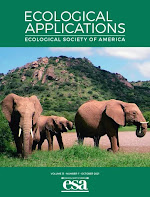Új közleményünk az Ecological Applications szaklapban
Post-restoration grassland management overrides the effects of restoration methods in propagule-rich landscapes
Tölgyesi Csaba, Vadász Csaba, Kun Róbert, Csathó András István, Bátori Zoltán, Hábenczyus Alida, Erdős László, Török Péter
Grassland restoration is gaining momentum worldwide to tackle the loss of biodiversity and associated ecosystem services. Restoration methods and their effects on ecological community reassembly have been extensively studied across various grassland types, while the importance of post-restoration management has so far received less attention. Grassland management is an important surrogate for natural disturbances, which most ancient grasslands have co-evolved with. Thus, without the reintroduction of management-related disturbance, restoration targets are unlikely to be achieved in restored grasslands. In this study, we aimed to explore how 20 years of management by mowing once a year or light cattle grazing, affects restoration success in Palearctic meadow-steppe grasslands restored by either sowing native grasses (‘sown sites’), applying Medicago sativa as a nurse plant (‘Medicago sites’), or allowing spontaneous succession (‘spontaneous sites’). We found that following mowing, sown sites maintained long-lasting establishment limitation, while Medicago sites seemed to have experienced a delay in succession. These limitations resulted in low total and target species richness, low functional redundancy and distinct species and functional composition compared to reference data from ancient grasslands. Spontaneous sites that were mowed reached a more advanced successional stage, although they did not reach reference levels regarding most vegetation descriptors. Sown and Medicago sites that were grazed had higher total and target species richness than those that were mowed, and showed restoration success similar to that of spontaneous sites, on which grazing had only moderate further positive effects. Grazed sites, irrespective of the restoration method, were uniformly species rich, functionally diverse and functionally redundant, and thus became important biodiverse habitats with considerable resilience. We conclude that an optimally chosen post-restoration management may have an impact on long-term community reassembly comparable to the choice of restoration method. Restoration planners may, therefore, need to put more emphasis on future management than on the initial restoration method. However, our findings also imply that if local constraints, such as potentially high invasive propagule pressure, necessitate the application of restoration methods that could also hinder the establishment of target species, the long-term recovery of the grassland can still be ensured by wisely chosen post-restoration management.

Nincsenek megjegyzések:
Megjegyzés küldése